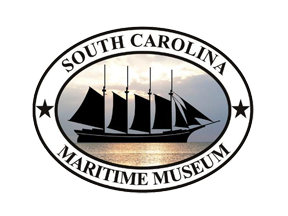Peak into history through new boat display
BY ZANE WILSON
For The Sun News
HIGHLIGHTS
Model of Brown’s Ferry vessel on display at S.C. Maritime Museum
Vessel is thought to be the oldest American-made boat ever recovered
Model is 50 inches long and 48 inches high
GEORGETOWN – In the days before roads, people and their goods got around Georgetown and its outlying areas by traveling on the rivers and ocean, and now there is a new exhibit of what those everyday boats probably looked like.
Volunteer labor and love of marine history came together to create a new model of the Brown’s Ferry Vessel, an artifact some historians have said is the most important nautical discovery in the country.
The remains of the vessel, thought to be the oldest American-made boat ever recovered, are displayed in the Rice Museum on Front Street, along with an earlier model that was made in the first years after the ship was recovered in 1976.
THE BROWN’S FERRY VESSEL IS BELIEVED TO HAVE SUNK IN THE BLACK RIVER NEAR BROWN’S FERRY BETWEEN 1730 AND 1740
The S.C. Maritime Museum, a block away on Front Street, wanted its own model of this significant piece of local history, so its leaders and supporters took on the task using the older model, the original boat, drawings of the boat, and more recent study to come up with a new version.
“Boat models are important,” said Ed Scott, a museum volunteer and marine architect who drew up the plans for the new model.
Few old boats have ever been found because the wood rots, and the pieces of them that have been found don’t give the full picture of what the vessel was really like.
“You need a model to show people this is what vessels looked like in the 18th century, 19th century,” Scott said.
“EVERYTHING IN THIS BOAT STANDING IN THE MUSEUM IS HAND MADE EXCEPT FOR THE RIGGING CORD AND THE CHAIN ON THE ANCHORS.”
– William Brady, who made the model
The Brown’s Ferry Vessel is believed to have sunk in the Black River near Brown’s Ferry between 1730 and 1740. It was carrying 25 tons of bricks, among other cargo, and historians speculate the boat sank because it was overloaded with the bricks.
It was found by divers in 1971 and raised from the river in 1976, then taken to Columbia for preservation.
The boat was “deemed archeologically and historically important to the state of South Carolina,” according to the University of South Carolina Maritime
Research Division. The S.C. Institute of Archeology and Anthropology, part of USC, took charge of the boat and conducted the preservation.
Preservation work took years. In 1979, the boat was accepted on the National Register of Historic Places, and after the preservation work was complete the vessel was installed in the Rice Museum in 1992.
The first model of the ship, which shows it with two pointed ends similar to those of a canoe, is also at the museum. It was made by Richard Steffy, one of the first experts to study the artifact.
The new model has a flat rear, called a transom, which further study shows is probably more likely, and Scott said Steffy agreed with the updated analysis.
350 to 400 hours
Time it took to build the new Brown’s Ferry Vessel model
Scott was one of three museum supporters who hatched the model plan about a year ago. Marine historian and author Robert “Mac” McAlister helped organize it, and William Brady did the heavy lifting by building the exhibit.
The vessel was 50 feet long. The model is on a scale of 1 to 10, so it is 50 inches long and 48 inches high.
That’s larger than most ship models and it took Brady 350 to 400 hours to make, he said.
“It was a fun project, and to me it was a challenge because of its size,” said Brady, who has made ship models for more than 40 years, including an oyster
boat for the museum and a Sea of Galilee boat for St. Peter Lutheran Church in Litchfield.
“I built the model using pine, cypress and oak,” the same wood the original is made from, he said. He used 1-by-6 boards and split them down to the sizes he needed.
“Everything in this boat standing in the museum is hand made except for the rigging cord and the chain on the anchors,” Brady said. But he did make the
anchors of wood painted to look like metal.
The job took a little over two months, he said. And it was a labor of love for the nonprofit museum.
“It’s a gift,” he said, adding that he enjoyed the work and the challenge of it.
Besides the pleasure of the construction, Brady said he wanted to make some models of boats from South Carolina, and hopes to work with Scott and
McAlister on some more.
Scott said he once reassembled a 1935 logging bateau for a museum when he was living in Maine, but had never designed a historical boat before.
“It’s been pretty interesting,” he said. “The Brown’s Ferry Vessel was actually a fine specimen,” because it was capable of sailing along the coast as well as on the rivers, so it was most likely of a type in very common use in the period.
The model was to be installed at a gathering for members Friday evening, and shown to museum visitors beginning Saturday morning.
